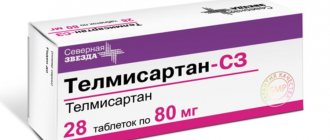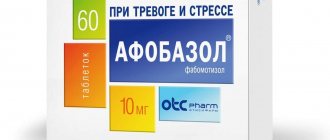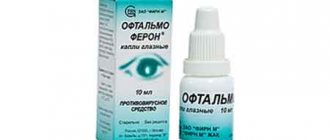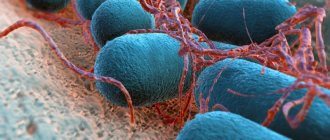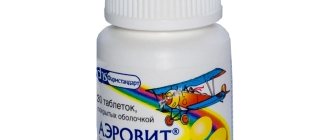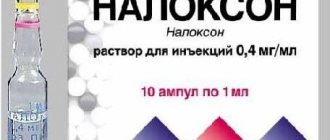Galantamine is a benzazepine that is obtained from the bulbs and flowers of narcissus, snowdrop and summer whiteflower. It is an oral cholinesterase inhibitor that acts as a ligand for nicotinic acetylcholine receptors and is widely used to enhance neurocognitive function. It works by competitively and reversibly inhibiting acetylcholinesterase, thereby increasing acetylcholine concentrations.
It was developed in the USSR in the 1950s. However, it was used for centuries by various cultures before it was officially discovered.
Mechanism of action
Galantamine, when taken orally, is well absorbed with a bioavailability of more than 90%. Peak effects are achieved after one hour. The half-life is 7 hours. When taken with food, some delay in absorption occurs, although this does not affect the final total absorption of the active compounds.
Once in the bloodstream, galantamine is easily absorbed into all areas of the body, including the brain. It binds to nicotinic acetylcholine receptors, causing conformational changes that lead to an increase in the amount of acetylcholine released. By inhibiting cholinesterase, it prevents the breakdown of acetylcholine, thereby increasing the levels and duration of action of the neurotransmitter .
Neurotransmitters are stored in nerve cells in the brain and nervous system and are involved in transmitting messages between nerve cells. They are necessary for the normal functioning of the brain and nervous system. Acetylcholine in the brain is constantly released by nerve cells and then broken down by another natural chemical called acetylcholinesterase.
One of the features of Alzheimer's disease is that the affected brain has lower than normal levels of acetylcholine due to neuronal degeneration.
Galantamine also increases acetylcholine activity in the brain . The overall result of these two actions is an improvement in acetylcholine levels and activity in the brain. It improves cognitive processes of thinking, learning and memory, and improves symptoms of dementia and daily functioning in Alzheimer's disease.
Brief overview of the drug Galantamine
Galantamine appears as a white, finely crystalline powder. It is difficult to dissolve in water, and practically insoluble in ethyl alcohol. The substance has a bitter taste.
Pharmacological group, INN, scope of use
Galantamine belongs to the group of cholinomimetics, as well as anticholinesterase drugs. INN – Galanthamine. The medicine is used in many areas of medicine:
- neurology;
- anesthesiology;
- surgery;
- toxicology;
- physiotherapy;
- radiology.
Thus, the use of Galantamine is carried out not only for therapeutic, but also for diagnostic purposes.
Release forms and average price of Galantamine
The drug is available in the form of oral tablets, extended-release capsules and injection solution. The approximate price for Galantamine is shown in the table.
| No. | Release form of Galantamine | Number of pieces per package | AB concentration (mg/ml) | Price in rubles | Pharmacy name |
| 1. | Pills | 14 | 4 | 438 | NeoPharmacy |
| 2. | Pills | 56 | 8 | 2121 | ZdravCity |
| 3. | Pills | 56 | 12 | 2664 | Piluli.ru |
| 4. | Injection | 10 pieces. 1 ml each | 1 mg/ml | 1506 | ePharmacy |
The basis is the price of the drug in pharmacies in Moscow and St. Petersburg, as well as the cost of the drug in online pharmacies in Russia.
Composition and pharmacological properties
Galantamine tablets may contain 4, 8 or 12 mg of the active substance of the same name, injection solution - 1 mg/ml. 1 ampoule contains 1 ml of the drug.
The main action of Galantamine is anticholinesterase. Under the influence of the drug, reverse inhibition, enhancement and prolongation of the effect of endogenous acetylcholine occurs. Galantamine as an active component helps facilitate the conduction of impulses in cholineergic, including neuromuscular synapses, as well as enhance excitation processes in the reflex zones of the brain - both the brain and the spinal cord. In addition, under the influence of galantamine, muscle tone increases, and the secretion of sweat and sebaceous glands is stimulated.
pharmachologic effect
Galantamine leads to pupil constriction and accommodation spasm. In parallel, under its influence, a decrease in IOP (intraocular pressure) occurs. When the medicine is injected into the conjunctival sac, temporary swelling of the conjunctiva occurs. But this symptom is not observed in all patients.
Galantamine easily penetrates the blood-brain barrier and stimulates the process of excitation of the central nervous system. It has a beneficial effect on muscle contractile function and also improves neuromuscular conduction.
Important! In patients with impaired cognitive functions, memory, memorization and concentration improve. This positive effect of therapy is achieved by increasing the activity of the cholinergic system.
After a single dose of a capsule containing 8 mg of the active substance, the substance is rapidly absorbed into the gastrointestinal tract. Taking the medication immediately after or during a meal slows down the absorption of galantamine (the maximum concentration of the component in the blood plasma decreases by 25%). However, food does not affect the completeness of absorption. The maximum content of the substance in the blood plasma is observed after 80 minutes.
The substance is excreted primarily by the kidneys, and only 2.2-6.3% is excreted in the feces.
See also:
Lucetam - instructions for use, reviews, indications and analogues
Positive effects
Galantamine has a positive effect on cognitive functions (memory, intelligence, thinking, learning) and sleep:
Increases memory
Galantamine increases the rate at which memories are formed and improves the retention of details and facts. This effect is associated both with an increase in acetylcholine levels and with modulation of the action of nicotinic receptors. Nicotinic cholinergic systems are involved in learning and memory in areas of the hippocampus and frontal cortex because they enhance afferent input to these areas. Acetylcholine as a neurotransmitter helps encode new memories by acting as a messenger that increases the activity and connectivity of cortical neurons.
Improves learning ability
By increasing synaptic and neuroplasticity. Modulation of synaptic function, including the formation of new neurons, is a neural aspect of the brain that is very important for learning and memory. Neurons communicate through connections (synapses). These synapses can control the strength of signals depending on the amount of stimuli received during the learning process. Unfortunately, these synapses and neurons are susceptible to damage from factors ranging from environmental factors, inflammation, and oxidative damage. The good news is that the brain can regenerate new neurons, but this ability decreases with age. Consequently, the ability to learn and retain new information is reduced.
Galantamine affects neuroplasticity both directly and indirectly. Directly – it stimulates synaptic plasticity, activating microglia and astrocytes. These cells maintain the blood-brain barrier, supply neurons with nutrients, and repair damaged nerve tissue. Indirectly, regular use of galantamine prevents neuronal damage by acting as an anti-inflammatory agent. It inhibits tumor necrosis factor (TNF-α), which is one of the cytokines involved in early inflammatory processes. Galantamine also significantly attenuates the decrease in pre- and postsynaptic proteins, thereby protecting dendritic branching and maintaining neuronal branch length.
These mechanisms induce cognitive improvement, including learning and memory, while preventing cognitive deficits.
Improves sleep quality
Galantamine increases the ease with which sleep occurs, causing REM sleep to occur earlier. During sleep, non-REM sleep occurs first, which is characterized by light sleep, slow heart rate, breathing, eye movements, and muscle relaxation with occasional twitching.
REM sleep occurs 90 minutes after falling asleep. This occurs several times during sleep and accounts for about 25% of the sleep cycle. During this phase, the brain and body are usually energized, the eyes move from side to side with the eyelids closed, breathing becomes fast and regular, the heart rate increases, and the body approaches wakefulness levels. However, the muscles become temporarily paralyzed, making it difficult to move during sleep.
Indicators of good sleep include sleep latency (the time it takes to fall asleep) of less than 30 minutes, awakenings during the night, awakenings after sleep onset, and duration of REM and non-REM phases. In addition to facilitating sleep onset, galantamine also allows the body to relax more quickly, increases REM density, and reduces slow wave sleep in the non-REM cycle.
REM (rapid eye movement) sleep is also thought to be involved in memory formation, learning, and mood balancing. Thus, galantamine also improves cognitive function by increasing REM intensity.
Lucid dreaming
One of the most popular reasons people use galantamine is to experience lucid dreaming and ease of sleep after a busy day. While in a lucid dream state, a person is usually aware that he is dreaming. The dreamer may have some control over the dream characters, narrative, and environment. It is not necessary that the sleeper must take control of the dream for it to be lucid, but simply the conscious awareness that it is a dream. Simply put, lucid dreaming is an opportunity to play with the extraordinary abilities of untapped parts of the brain.
The primary cognitive process that makes lucid dreaming possible is working memory, also known as short-term memory. It is clear that acetylcholine affects memory, sensory perception and muscle control. In addition, acetylcholine is the main neurotransmitter at work during the rapid eye movement (REM) phase of sleep. As mentioned earlier, galantamine hydrobromide increases the level and duration of action of acetylcholine, thus prolonging REM sleep by increasing sleep activity. This provides a conducive environment for lucid dreaming.
Adverse reactions and overdose
Taking the drug, especially at the very beginning of therapy, can lead to side effects. The most common undesirable reactions of the body to the administered substance can appear in the form of:
- pressure changes;
- orthostatic collapse;
- CH;
- peripheral edema;
- AV block;
- tachycardia;
- tides;
- bradycardia;
- ischemia;
- dyspeptic disorders;
- anorexia;
- dysphagia;
- gastritis;
- dry mouth;
- increased salivation;
- diverticulitis;
- gastroenteritis;
- duodenitis;
Duodenitis
- hepatitis A;
- perforation of the esophageal mucosa;
- bleeding from the gastrointestinal tract;
- muscle spasms or weakness;
- fever;
- urinary incontinence;
- hematuria;
- polyuria;
- infectious lesions of the urinary tract;
- urine retention;
- calculosis;
- renal colic;
- tremors of the limbs;
- inhibition of psychomotor and motor reactions;
- changes in taste perception;
- visual and/or auditory hallucinations;
- increased excitement, aggressiveness, irritability;
- cephalgia;
- vertigo;
- seizures;
- ataxia;
- allergic rhinitis;
- nosebleeds;
- visual disturbances;
- apathy;
- paranoid reactions, etc.
Due to the risk of developing such adverse reactions, self-medication is unacceptable.
An overdose of a medication can manifest itself:
- depression of consciousness up to the development of a coma;
- convulsions;
- increased intensity of side effects;
- pronounced muscle hypotonia, weakness;
- hypersecretion of the tracheal mucosa;
- development of bronchospasm.
If you do not respond to these symptoms in a timely manner, death may occur due to asphyxia caused by bronchospasm. Treatment of overdose at home involves only gastric lavage. But it can only be carried out after calling emergency services. The patient may also need symptomatic treatment.
In particularly severe cases, the patient may be hospitalized in a hospital, where he will be given an antidote - atropine at a dose of 0.5-1 mg. Route of administration: intravenous. Subsequently, the dosage of atropine is determined depending on the therapeutic response of the patient.
See also:
Cavinton Forte - instructions for use, what it is prescribed for and reviews
Side effects
Galantamine may cause the following side effects:
- Nausea (sometimes with vomiting).
- Diarrhea (diarrhea).
- Sweating.
- Muscle spasms.
- Stomach ache.
- Loss of appetite (and weight loss).
- Headache.
- Dizziness.
- Tremor.
- Fainting.
- Drowsiness.
- Hallucinations.
- Allergic reactions are rare but still possible for people with flower allergies. It is characterized by a sudden rash, itching, swelling of the mouth, difficulty breathing and redness.
Price
Cost of Galantamine in Moscow pharmacies:
| Type of product | Pharmacy | Price, rubles |
| Tablets 8 mg 56 pcs. | Pills.ru | 2170 |
| IFC | 2290 | |
| Dialogue | 1985 | |
| Beauty and health laboratory | 2135 | |
| 4 mg 14 pcs. | 460 | |
| Pills.ru | 475 | |
| Dialogue | 425 | |
| 12 mg 56 pcs. | Pills.ru | 2650 |
| Dialogue | 2565 | |
| Beauty and health laboratory | 2655 |
Contraindications
- Decreased kidney or liver function.
- Pregnant and lactating women.
- Allergy to lactose. In this case, it is necessary to avoid taking the tablet form. Other forms (capsules and injection solutions) are suitable.
- Concomitant use with the following medications: antipsychotics, antidepressants, anticonvulsants, anticholinergics, erythromycin, ketoconazole, nonsteroidal anti-inflammatory drugs (NSAIDs) such as aspirin or ibuprofen, and high blood pressure medications.
- Concomitant use with alcohol.
- Not recommended for people with a blockage in the stomach, intestines or urinary tract, or for people recovering from stomach, intestinal or bladder surgery.
- Should be used with caution in case of heart disease, impaired potassium levels in the blood, epilepsy, Parkinson's disease, asthma and lung disease, ulcers.
Indications for use
The drug in the form of capsules and tablets is prescribed for:
- Alzheimer's type dementia of mild to moderate severity.
In addition, tablets are used in the treatment of:
- polio;
- progressive muscular dystrophy, myopathy;
- cerebral palsy
- radiculitis, neuritis.
The solution for injection is used in various areas of medicine:
in neurology in the treatment of:
- traumatic damage to the nervous system;
- cerebral palsy;
- spinal cord diseases;
- mononeuritis, polyneuritis, polyneuropathy, polyradiculoneuritis;
- Guillain-Barre syndrome;
- idiopathic paresis of the facial nerve;
- myopathies;
- bedwetting.
In surgery and anesthesiology, the drug is used as an antagonist of non-depolarizing muscle relaxants and the treatment of postoperative atony of the bladder and intestines.
In toxicology - in case of intoxication with anticholinergic drugs, Morphine or its analogues.
In physiotherapy – as iontophoresis for disorders of the peripheral nervous system.
In radiology – in order to improve the quality of diagnostics of the digestive system.
Interaction with other drugs
Galantamine should not be taken with other drugs that increase the activity of acetylcholine as this may increase the risk of side effects. These medications include the following:
- Medicines for urinary retention (bethanechol chloride, distigmine).
- Medicines for Alzheimer's disease (donepezil, rivastigmine).
- Medicines for myasthenia gravis (neostigmine, edrophonium chloride, distigmine methyl bromide, pyridostigmine bromide).
- Pilocarpine.
Galantamine has the opposite effect of anticholinergic drugs, which act by reducing the activity of acetylcholine. If taken together, anticholinergic medications and galantamine may counteract each other, which may make one or both medications less effective. People taking galantamine should avoid anticholinergic medications. These include the following:
- Anticholinergic drugs for the treatment of Parkinson's disease (procyclidine, benzatropine, orphenadrine, trihexyphenidyl).
- Antispasmodics for intestinal disorders (hyoscine, atropine, propantheline).
- Anticholinergic drugs for urinary incontinence (oxybutynin, flavoxate, tolterodine, propiverine, trospium chloride).
Galantamine has the potential to slow heart rate. This effect may be enhanced if taken with other medicines that may slow your heartbeat, such as those listed below:
- Amiodarone.
- Beta blockers (atenolol, propranolol).
- Calcium channel blockers (verapamil, diltiazem).
- Digoxin.
- Ivabradine.
The following medications may increase the level of galantamine in your blood. Because it may increase side effects such as nausea and vomiting, the dose of galantamine may need to be reduced for people taking any of the following medications:
- Erythromycin.
- Fluoxetine.
- Fluvoxamine.
- Ketoconazole.
- Paroxetine.
- Quinidine.
- Ritonavir.
Composition and release form
The drug Galantamine is available in three formats:
| Pills | Solution | Capsules | |
| Description | Flat white tablets | Transparent colorless liquid | White or light pink capsules with white granules inside |
| Galantamine concentration, mg | 4, 8 or 12 per piece. | 1 per 1 ml | 8, 16 or 24 per piece. |
| Auxiliary components | Calcium hydrogen phosphate, microcrystalline cellulose, wheat starch, lactose, magnesium stearate, talc | Sodium chloride, water | Sucrose, corn starch, yellow or red iron oxide, hypromellose, titanium dioxide, macrogol, diethyl phthalate, ethylcellulose |
| Package | 10, 15, 28, 30, 56 or 60 pcs. in a pack | Ampoules 1 ml, pack 10 ampoules | Blisters of 7 pcs., packs of 1, 2, 4, 8 or 12 blisters |
Instructions for use
- Galantamine is initially taken at 4 mg twice daily.
- After a month, this dosage can be increased.
- A typical dosage may be 8 to 12 mg twice daily (for tablets) or 16 to 24 mg per day (for capsules).
- Galantamine should be taken with or after meals.
- Since everyone's body chemistry is different, it is best to start with the lowest effective dose.
Galantamine tablets and oral solution are immediate-release. This means that the medicine is absorbed into the bloodstream from the stomach soon after they are taken. Tablets and solution are taken twice a day - during lunch or dinner.
Galantamine extended-release capsules are designed to release the medication slowly throughout the day. They should be swallowed whole with liquid and not chewed, otherwise this will stop their prolonged action. Galantamine extended-release capsules are usually taken once daily in the morning with food.
Galantamine may cause drowsiness and dizziness, especially in the first few weeks after starting treatment. As a result, it may reduce a person's ability to safely perform potentially hazardous tasks (driving, operating machinery).
It is important that people taking galantamine drink plenty of fluids to avoid dehydration and reduce possible side effects.
People with Alzheimer's disease lose weight. Galantamine may also cause weight loss. For this reason, it is necessary to regularly monitor body weight in people taking this medicine.
When used for lucid dreaming, the “wake up and then go back to bed” strategy is highly recommended. This involves sleeping for 4 to 6 hours, then waking up to take the supplement and returning to sleep. At this point in sleep, acetylcholine levels are high. This reduces the likelihood of nightmares or decreased sleep quality compared to when you take the supplement just before bed.
Galantamine is taken with cholinergic supplements such as Alpha-GPC and CDP-choline, or with racetams. They act synergistically to increase acetylcholine levels.
Pharmacodynamics and pharmacokinetics
Galantamine is a reversible anticholinesterase drug. Thanks to its use, cholinergic transmission is improved, enhancing and prolonging the effectiveness of endogenous acetylcholine. At the same time, neuromuscular transmission in the muscles is ensured, and antagonism to curare-like non-depolarizing agents is manifested. Also, under the influence of Galantamine, the muscle tone of internal organs increases and the work of the exocrine glands increases. As a result, intraocular pressure decreases, and miosis and accommodation spasm may occur. The active substance quickly penetrates the BBB into the brain, enhancing excitation processes.
The drug is quickly absorbed inside the body. In this case, the achievement of therapeutic concentration in the blood plasma occurs after 30 minutes. The maximum concentration is observed with a single use of a therapeutic dose, after 2 hours. Galantamine is characterized by a weak connection with plasma proteins. Metabolism occurs by demethylation, with the formation of metabolites - epigalantamine and galantamine. The drug is excreted mainly in the form of metabolites in urine and a small part in bile.
History of galantamine
Research into galantamine for modern use began in the 1950s in the Soviet Union. It was first isolated from the bulbs of Galanthus nivalis, known as the snowdrop. It was later studied extensively for its use as an acetylcholinesterase inhibitor.
Since then, galantamine has been used in countries other than Russia, including Eastern Europe and the UK. In the US, galantamine was approved by the Food and Drug Administration (FDA) in 2001 as a safe and effective supplement for improving cognition and especially memory loss.
In Greek mythology, Homer tells a story in which the god Hermes gave Odysseus an herb known as moth, with a black root and a milk-like flower. Hermes claimed that the herb would make Odysseus immune to the sorcerer's medicine - an extract from Datura Stramonium (Datura vulgare).
Analogues of galantamine
Acetylcholinesterase inhibitors have the same therapeutic properties, but differ in side effects.
Donepezil . A prescription drug used to treat Alzheimer's disease. Common side effects of donepezil include nausea, diarrhea, and trouble sleeping.
Rivastigmine . A prescription drug used to treat dementia in people with Alzheimer's disease or Parkinson's disease. Common side effects include nausea, vomiting, loss of appetite, and dizziness.
Takrin . Treats symptoms of Alzheimer's disease.

